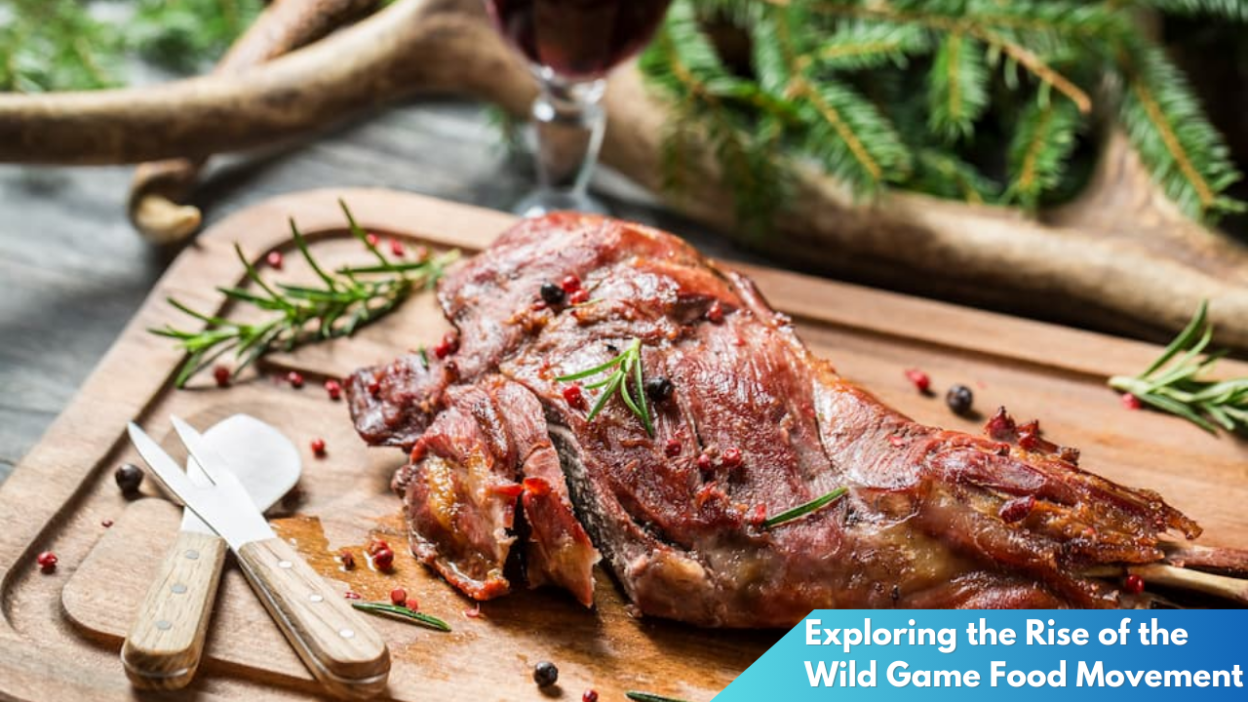In recent years, there has been a notable shift in the culinary world as chefs and food enthusiasts alike begin to embrace an age-old practice: the consumption of wild game. This trend, often referred to as the Wild Game Food Movement, is not only transforming palates but also reshaping perceptions around food sourcing, sustainability, and health. As this movement gains momentum, it is being lauded for its potential to reconnect individuals with nature and promote more conscientious eating habits.
The Wild Game Renaissance: A Culinary Revolution

Wild game is experiencing a renaissance as chefs across the globe are rediscovering the rich culinary traditions surrounding these meats. Historically, wild game was a staple in many cultures, celebrated for its robust flavors and nutritional value. Today, top restaurants are reintroducing these dishes, tapping into a sense of nostalgia while also showcasing innovative cooking techniques. This fusion of old-world ingredients with modern gastronomy is captivating diners who are seeking unique and authentic culinary experiences.
This revival can be attributed to a growing discontent with industrially produced meats and a desire for more natural food sources. Consumers are increasingly aware of the environmental and ethical implications of factory farming, leading them to explore alternatives that align more closely with their values. Wild game, often sourced from local landscapes, provides an appealing solution for those committed to supporting sustainable and ethical food practices. This shift is also a nod to the burgeoning farm-to-table movement, which emphasizes transparency and traceability in the food supply chain.
Moreover, the rise of the Wild Game Food Movement is driven by a yearning for adventure in dining. As foodies become more adventurous, they are eager to try novel flavors and textures that challenge conventional palates. Game meats such as venison, boar, and pheasant offer a welcome departure from traditional protein sources, providing diverse and exciting menu options. This culinary revolution is well underway, with wild game gaining popularity not only in upscale dining but also in home kitchens as more people explore this ancient yet refreshingly modern approach to food.
From Forest to Fork: Embracing Natural Flavors
At the heart of the wild game food movement is a profound appreciation for natural flavors. Unlike domesticated animals, wild game live in their natural habitats, feeding on native vegetation, which imparts distinct and often complex flavors to their meat. This connection to the land is a crucial aspect of the movement, as diners seek to experience the landscapes from which their food originates. The phrase “from forest to fork” encapsulates this journey, highlighting the direct link between the wilderness and the dining table.
Chefs embracing wild game are not only focusing on the meat’s unique taste profiles but also on its versatility. Wild game can be prepared using a variety of cooking techniques, from slow braising to grilling, each method enhancing different aspects of the meat’s flavor and texture. By experimenting with these meats, chefs are able to craft dishes that are both sophisticated and deeply rooted in nature. This creativity is pushing the boundaries of traditional cuisine, leading to a vibrant and dynamic dining landscape.
For those who enjoy cooking at home, wild game offers an opportunity to reconnect with the culinary traditions of hunting and gathering. The process of sourcing, preparing, and cooking wild game fosters a deeper appreciation for the intricate balance of ecosystems and human sustenance. As more people seek to bring these natural flavors into their kitchens, they are also engaging in a broader conversation about the importance of food sovereignty and the role that diverse food sources play in a healthy and sustainable diet.
Sustainability and Health in the Wild Game Craze

One of the compelling arguments for the rise of the wild game food movement is its sustainability. Wild game is often seen as a more environmentally friendly option compared to conventionally raised livestock. These animals typically require less human intervention in terms of feed and water resources, and their populations are managed through regulated hunting practices that help maintain ecological balance. This sustainable approach aligns with the growing consumer demand for food systems that protect and preserve natural ecosystems.
From a health perspective, wild game is also gaining recognition for its nutritional benefits. Generally, game meats are leaner than farm-raised alternatives and are often higher in essential nutrients such as iron and omega-3 fatty acids. This makes them an attractive option for health-conscious individuals looking to reduce their intake of saturated fats while still enjoying a protein-rich diet. Additionally, the absence of antibiotics and growth hormones in wild game further appeals to those seeking cleaner and more natural food choices.
As awareness of these benefits spreads, the wild game food movement is poised to continue its growth. However, its success hinges on responsible sourcing and consumption practices. Education plays a crucial role in ensuring that consumers understand the importance of ethical hunting and the preservation of wildlife habitats. By promoting sustainable hunting and consumption, the movement not only enriches the culinary world but also champions a future where food systems are in harmony with the environment and human health.
The rise of the Wild Game Food Movement represents a significant shift in the way we think about food, flavor, and sustainability. As this trend continues to gain traction, it encourages a deeper connection with the earth and a greater appreciation for the diversity of our natural resources. Whether dining out or cooking at home, embracing wild game is a step towards a more conscious and adventurous culinary experience. By fostering a culture of sustainability and ethical consumption, the movement not only tantalizes the taste buds but also inspires a more harmonious relationship with the world around us.



